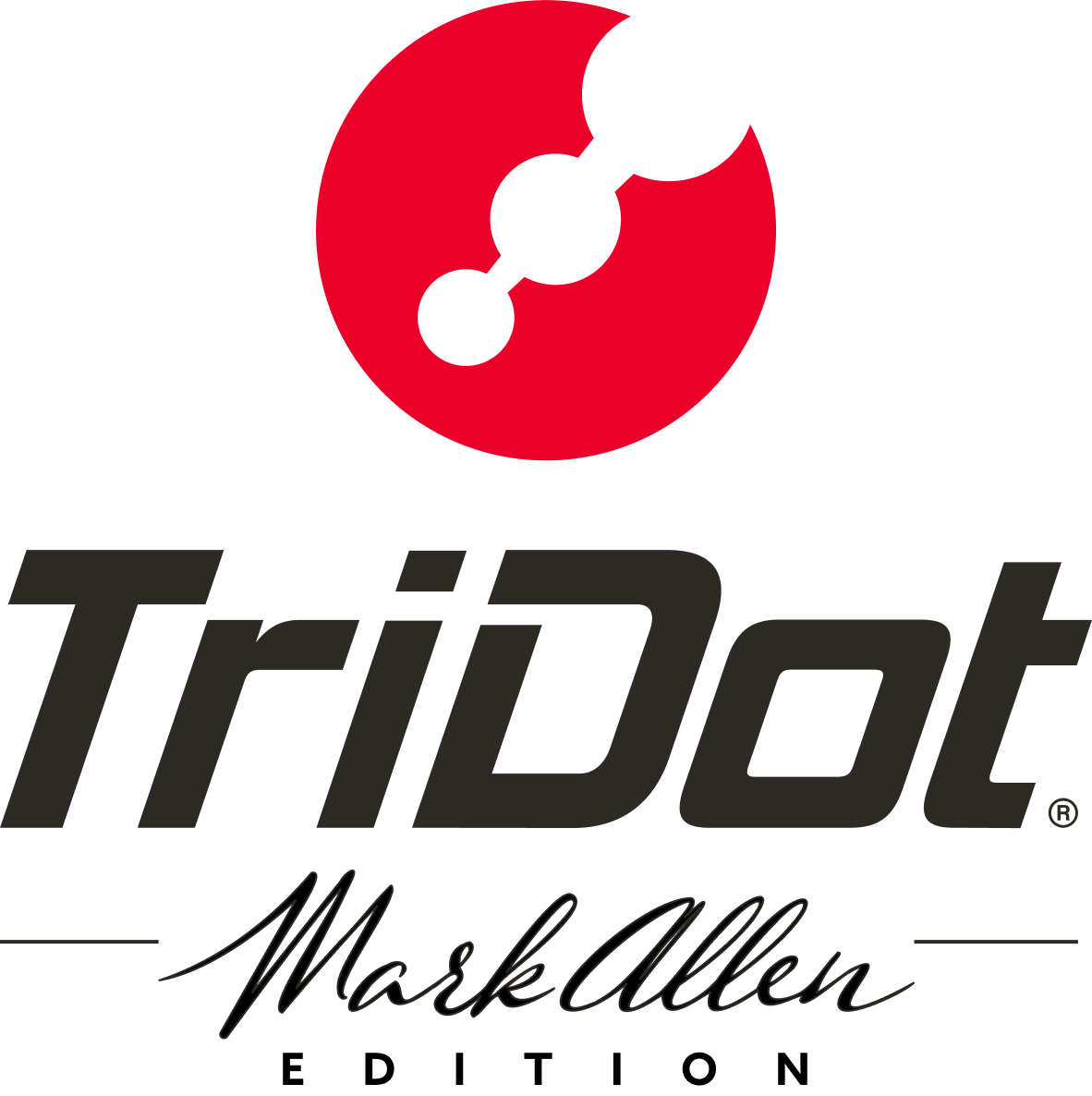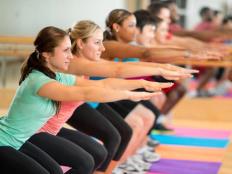
If you're familiar with the triathlon or endurance scene, there’s no doubt you’ve heard of the legend that is Mark Allen. He's a six-time IRONMAN World Champion with an unprecedented 21-race win streak from 1988 through 1990, and he won the first-ever Olympic Distance Triathlon Championship. As if that highlight reel wasn't impressive enough, he's also honored in the IRONMAN, USAT and ITU Halls of Fame, and ESPN recognizes Mark as the "Greatest Endurance Athlete of All Time."
After decades of racing and coaching at the highest level, Mark has taken the next giant leap forward in his career. He's officially the newest member of the TriDot Coach Community.
What is TriDot, and why is this such a big deal?
Simply put, TriDot is the most advanced, cutting-edge training solution for triathletes—period. And Mark Allen is all in on it.
TriDot, which can be used with or without a coach, uses artificial intelligence to provide optimized triathlon training specific to each individual athlete for better real-world results in less time.
TriDot was the first to use artificial intelligence in triathlon training, filing its first patent in 2011, and is backed by two decades of training and racing data.
The GOAT of triathlon sat down with ACTIVE.com to discuss why joining the TriDot team was the next logical step in his coaching career, how athletes gain a competitive edge through TriDot's AI-driven platform and why data—and how we understand it—is more important now than ever before.
Let's just say, if Mark had TriDot back in the day, we might have been introducing him as the seven-time IRONMAN World Champion.
ACTIVE: Let's start with the basics—how did you first discover TriDot?
MA: My business partner Scott Zagarino, the CEO of Mark Allen Sports, was looking at TriDot a while ago and told me to take a look, and from the surface I was like “I don't really know.” One thing led to another, and I realized this is actually something I had really wanted to do with my coaching but didn't have the resources or the team to even come close to putting into action. TriDot’s ability to take data, analyze it and compute some real predictive things is what sold me on the concept.
So we've heard a lot of buzzwords over the years in the endurance space, but what does "predictive fitness" really mean?
MA: Everyone is now dialed into all these numbers: power on the bike, heart rate, pace, cadence, etc. But it's hard to track the progress it's providing an athlete in their training. TriDot is taking a closer look at the relationship between these metrics and an athlete’s performance by using real science and training philosophies that actually work. They're using real-world implementation of this data to then modify people's training and optimize what they're doing.
For example, this could mean that sometimes an athlete isn't going hard enough, and sometimes it means they're going too easy, or their body type isn't able to absorb a specific type of training, so they have to shift. Also, some people respond better to high-intensity strength work, while others respond better to endurance work.
There are all these little subtleties that, as a coach, you try to pick up on and dial in when creating training plans for your athletes, but it's very hard to do. TriDot allows the coach to look inside their athlete's data, and then, along with the coach's experience, help the athlete optimize their performance.
What makes TriDot's technology different from other training platforms?
MA: TriDot’s application of testing to one of the most challenging sports is what sets it apart. You essentially have three different sports you’re optimizing simultaneously. The information and utilization of that data is drawing from a vast resource of how athletes have responded to training over 20 years.
TriDot is exactly what I knew someone would do at some point, and if I couldn't do it, I would be left in the dust with my coaching because the human brain can't compete with that sort of power.

As a TriDot coach, what do you want to see from an athlete to help them maximize their potential?
MA: The main thing is how closely they're following their workouts. Each workout has certain zones they're supposed to target and a specific amount of time within each zone. As a coach, I'm looking to see if they’re following those zones and specific times or not.
Motivating a triathlete isn't usually the problem. It’s more about tempering that enthusiasm so that these athletes are more patient and less concerned about being the workout champion among their friends. When it's time to do some of the harder stuff, put in the extra effort.
Many athletes have a monochrome training outlook where everyday is the same intensity, but the best results come when you vary that intensity. As a coach I look to see if they follow that protocol.
TriDot users get a score on how they're performing with this variety in intensity, and initially scores might be low because they're used to doing their own thing. As they get the feedback that shows they didn’t train correctly, they usually follow the workouts more closely. It's a positive feedback loop once they start to see the results. These athletes see that they’re getting more fit, aren't wasting their time, and their niggling injuries are going away.
ACTIVE: You mentioned injury. How does TriDot predict, and prevent, injury in their athletes?
MA: There's usually unusual differences between heart rate, average watts or average pace that takes place before people start to get injured. Most injuries come from being overstressed and that stress can be from anything from overtraining to not getting enough sleep. You'll see these metrics slowly start to move away from the 'ideal', and that's a clue that something's not right.
Stress is the biggest single thing that will slow an athlete's improvement in fitness. When it's not taking place, you have to dial something back and look at where it's coming from. TriDot's AI technology may not tell you the source of stress, but these cues will clearly show up in their training.
As a coach, this is where the human element comes in and I can help people look at it and figure out what's going on with training or life.
ACTIVE: How does TriDot allow you to strike a better balance between the human element of coaching and the data-driven element?
MA: There's always a human aspect to coaching, since athletes have to know how to deal with themselves and overcome anxiety, and there are still those subtle things that no software can factor into. That's the perfect marriage in my mind: data and heart.
If my time is taken up trying to assimilate all the data that comes in daily from everyone I coach, I'd barely have time to respond to everyone and get back to them. If that's all being done for me with TriDot's algorithms and AI from a vast source of knowledge that they've quantified, then I have more time to clue in to what's happening and empathize accordingly.
The athletes love it too, because they know they have to plug in these numbers to optimize their training, and TriDot will take into account all the factors that predict if their training is effective, including a different elevation and temperatures. TriDot normalizes for not just weather though, but also age and gender. Athletes are able to actually compare themselves to everyone else, whether you're a 40-year-old man who went nine hours in an IRONMAN, or a 60-year-old woman who went 16 hours. It's fun.
We've heard the sense of community is something TriDot athletes rave about. Can you speak more to that?
MA: It's true, TriDot also has a really great community aspect to it. The athletes are super active in the TriDot Facebook group and share their stories—not just the data part, but the human part. Stuff like, 'Hey, I was really struggling today'.
When you're training for a triathlon and you're having a tough time coordinating with a coach or group, it’s easy to feel like you're out there on your own. With TriDot, you feel like you're part of a community. It's an element that I find extremely valuable. You get to know people even though you've never met them in person, and you cheer for their success and you empathize when someone has a lousy day. They really foster positivity.
How does your level of fulfillment compare between being an athlete at the highest level and coaching athletes?
MA: They're both satisfying for different reasons. When I was racing and had breakthrough performances, they were incredibly fulfilling since I knew it was something that took place through a lot of hard work over time.
As a coach, I still feel that excitement when someone comes back and says, ‘I nailed it', because I know what that feels like. I know what the training feels like, I know what the disappointment feels like, and I know what the elation feels like.
I only coach age groupers, and often they have no idea what they can do. When they hit those breakthrough moments in training or racing that surprise themselves, it's a fun thing to know and be part of. The athletes who are my greatest supporters are the ones who struggled with me most and doubted the process at the beginning.
Do you have to approach coaching differently when coaching others versus coaching yourself?
MA: As an athlete, I was only coaching myself. I knew all the ins and outs of my performance, like my weaknesses and the workarounds I could do to make weak points stronger. As a coach, no two people are the same, so I have to figure out how each person is hardwired, what their physiology is, and then make small tweaks to optimize them and their training. And that's what makes it fun.
I try to emphasize that based on your numbers, you have a really good potential of hitting your goals or targets. But at the same time, I arm my athletes with a mental bag of tricks so that they can manage themselves and the chaos of racing.
You can't go to a triathlon and not see a TriDot kit—where do you see TriDot in the next five to ten years?
MA: There are a lot of features they're working on to help optimize triathlon training, many of which I can't share at the moment, but they will be utilizing the AI to expand out into health, wellness and longevity—things that are broader than just getting fast at an IRONMAN.
It's the same process of analyzing data and figuring out what really works, and that means taking good science that was done in an isolated environment and testing it in the real world. We'll see what they have now being utilized by health professionals and doctors and health and wellness in every aspect of life. It's pretty cool.
This might be the most important question—how do you think your results would have differed if you had been using TriDot back in the day?
MA: TriDot would have enabled me to avoid some of the periods where I overtrained and avoid obstacles I didn't see coming.
For example, after my fifth IRONMAN win in 1993, I had won five in a row and was just exhausted. The next year when I started my training, I hadn't come around yet and by June and July, I was still tired. In retrospect, I had maxed myself out for five years in a row and I hadn't taken quite enough time away between those wins to put energy back into the bank to charge the batteries.
Had I had TriDot, I would've seen that coming in very clear numbers. Reality check: 'You're psyched, you won, you want to get back to training, but here's what you need to do'. I might've taken another three weeks easy and cut more races out of my schedule. I had about a year and a half where I was firing from two of my six cylinders. I was able to get back with some help and win my sixth world title in 1995, but if I had TriDot, I'm confident I wouldn't have had to skip IRONMAN in 1994.
Then maybe I could've won the '94 title too, and I could've been the seven-time IRONMAN champ. Dave Scott would've been one behind me!
Click here to learn more about TriDot, its community, and how training for your next triathlon using TriDot’s Data Optimized Training can unlock your best performance yet.
Get ACTIVE on the Go


Couch to 5K®
The best way to get new runners off the couch and across the finish line of their first 5K.
Available for iOS | Android









Discuss This Article